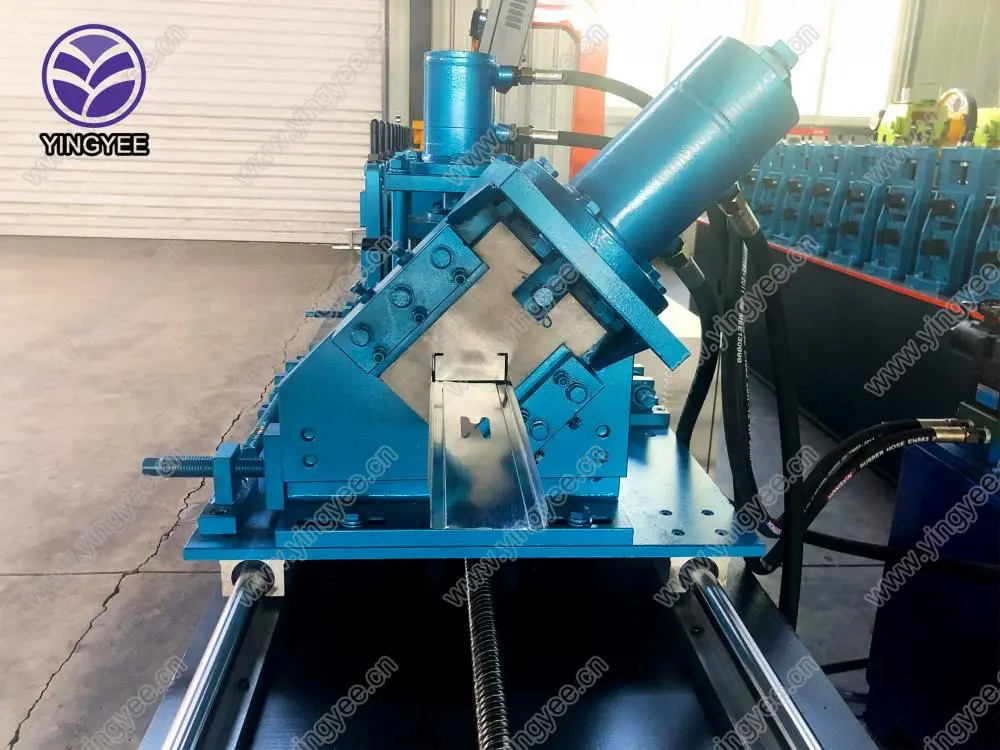
An Overview of Shelf Rack Upright Roll Forming Machines
In the fast-paced world of manufacturing and storage solutions, efficiency and precision are paramount. One component that has revolutionized the shelving and racking industry is the shelf rack upright roll forming machine. This innovative equipment plays a crucial role in producing high-quality steel uprights that form the backbone of various shelving systems.
Understanding Roll Forming Technology
Roll forming is a continuous bending operation in which a long strip of metal is passed through consecutive pairs of rolls. The process gradually shapes the material into a desired cross-section, resulting in a highly precise and uniform product. Roll forming is particularly advantageous for producing long lengths of parts as it minimizes waste and enables the rapid production of components that meet specific industry standards.
The shelf rack upright roll forming machine is designed specifically to create the vertical supports, or uprights, used in shelving and racking systems. These upright structures are essential for providing strength and stability to the entire assembly, enabling them to bear significant loads while ensuring safety and reliability.
Components of a Shelf Rack Upright Roll Forming Machine
A typical shelf rack upright roll forming machine consists of several critical components
1. Decoiler This device feeds the raw steel coil into the roll forming line. It is designed to handle various coil sizes and weights, ensuring a smooth and continuous feed.
2. Roll Forming System This is the core of the machine, comprising several sets of rollers. Each set is precisely machined to progressively shape the metal as it passes through. Adjusting the rollers allows for the creation of different upright profiles and dimensions.
3. Cutting Mechanism At the end of the forming process, the machine is equipped with a cutting system that accurately cuts the formed upright to the desired length. This system can be hydraulic or mechanical, depending on the machine's design and capacity.

4. Control System Modern roll forming machines come with advanced control systems that allow operators to monitor and adjust the machine settings. These include speed controls, pressure adjustments, and length settings, which enhance production efficiency and ensure product consistency.
5. Conveyor System After cutting, the finished uprights are often moved via an integrated conveyor system, which facilitates easy collection and storage for further processing or assembly.
Benefits of Using Shelf Rack Upright Roll Forming Machines
1. High Production Efficiency Roll forming machines are capable of producing large quantities of parts in a relatively short time, making them an ideal choice for companies looking to increase their output.
2. Cost-Effectiveness The precision of roll forming minimizes material waste, making it a cost-effective option for producing shelf rack uprights. Additionally, reduced labor requirements further enhance cost efficiency.
3. Strength and Durability The process of roll forming improves the mechanical properties of the metal, resulting in uprights that are strong and durable. This is crucial for ensuring the safety and reliability of shelving systems in both commercial and industrial settings.
4. Customizability Manufacturers can easily adjust the design of the uprights to meet specific needs. Whether it's variations in height, width, or load-bearing specifications, roll forming machines can produce customized solutions without significant redesign costs.
5. Space Efficiency Shelf rack upright roll forming machines often have a compact footprint, allowing them to fit into various production environments without requiring extensive space.
Conclusion
As the demand for efficient storage solutions continues to grow, the importance of shelf rack upright roll forming machines cannot be overstated. They not only streamline the production process but also contribute significantly to the reliability and safety of shelving systems. With their ability to produce high-quality uprights tailored to various specifications, these machines remain a vital asset for manufacturers in the ever-evolving landscape of storage solutions.